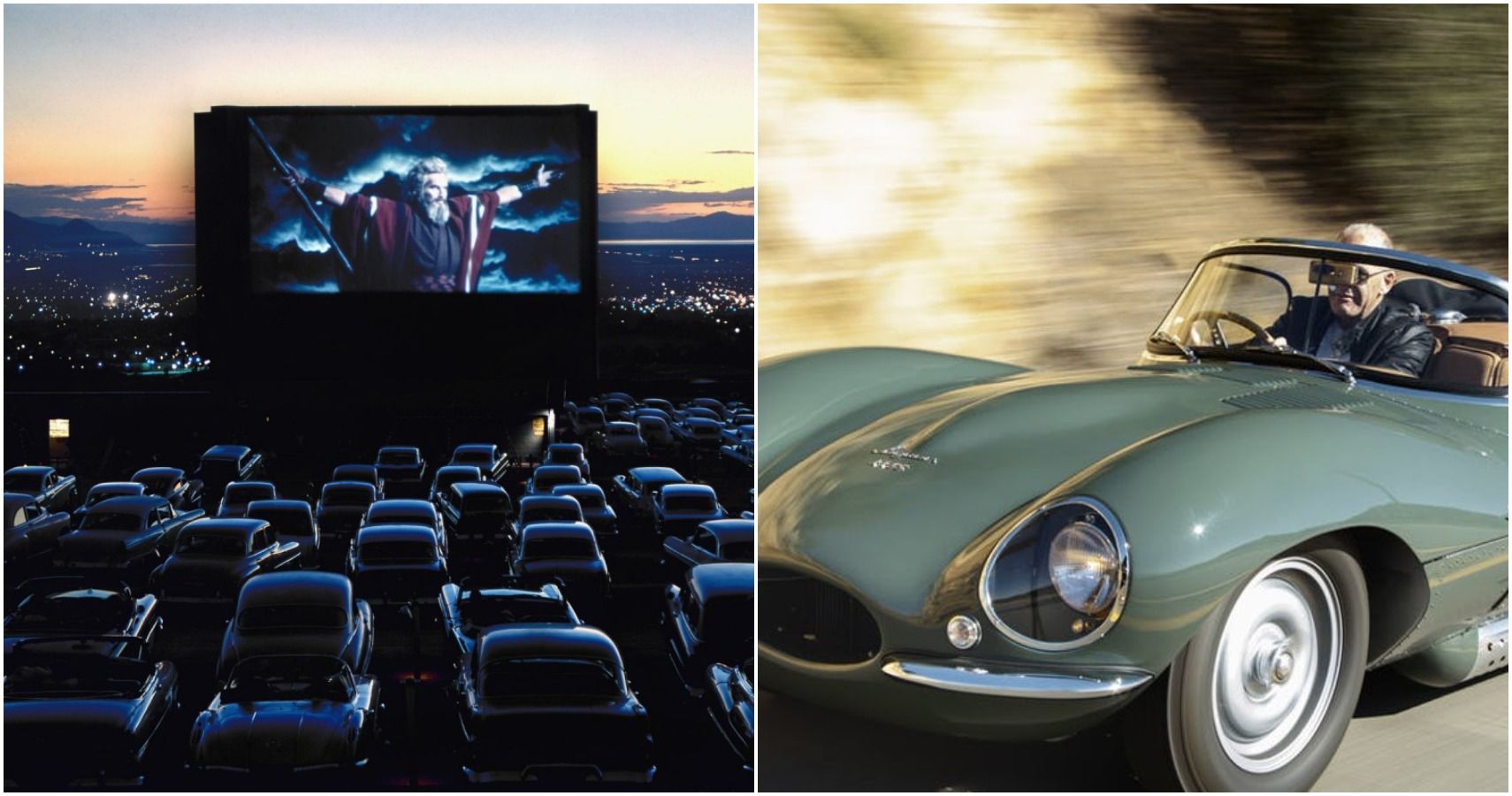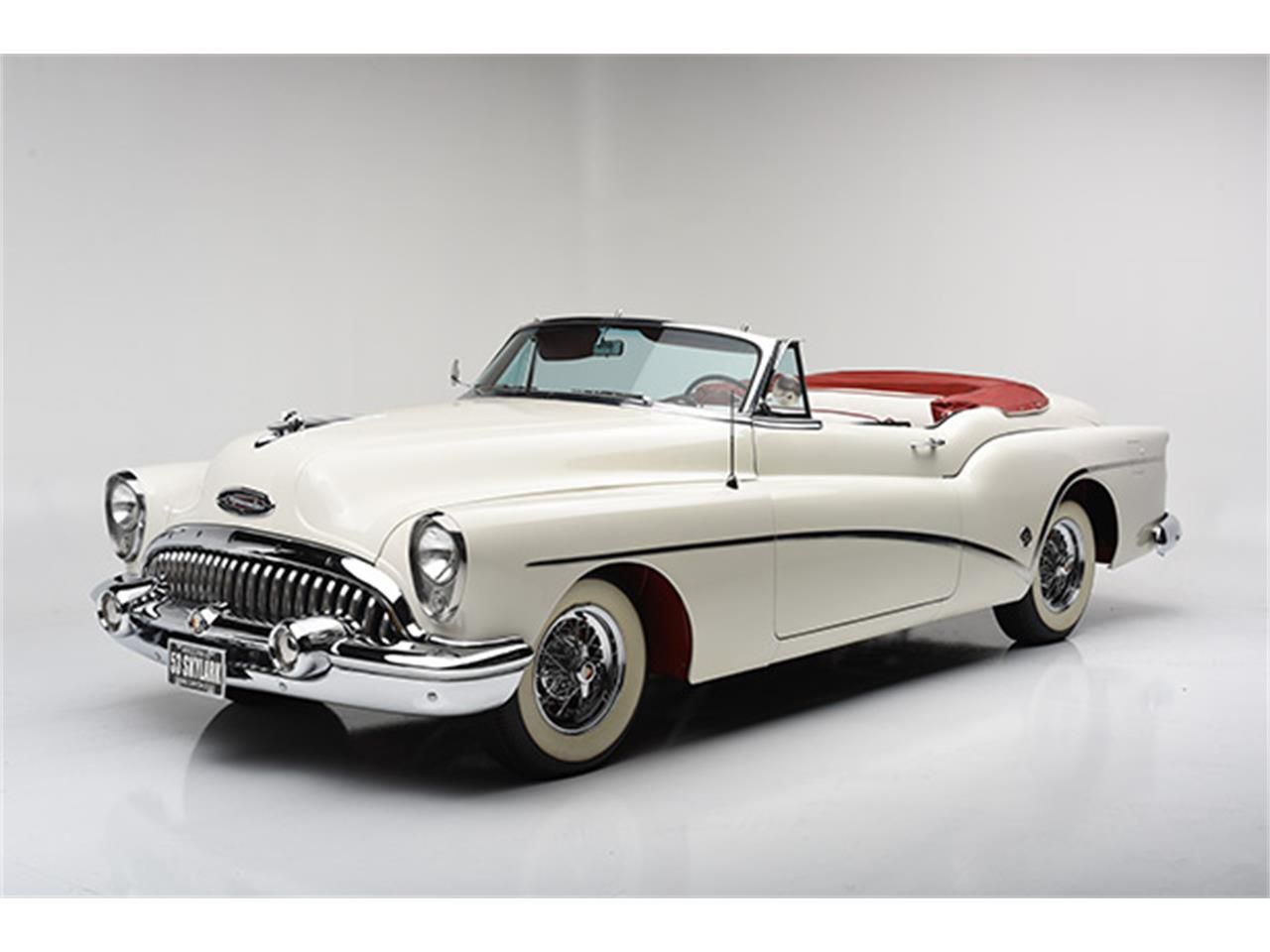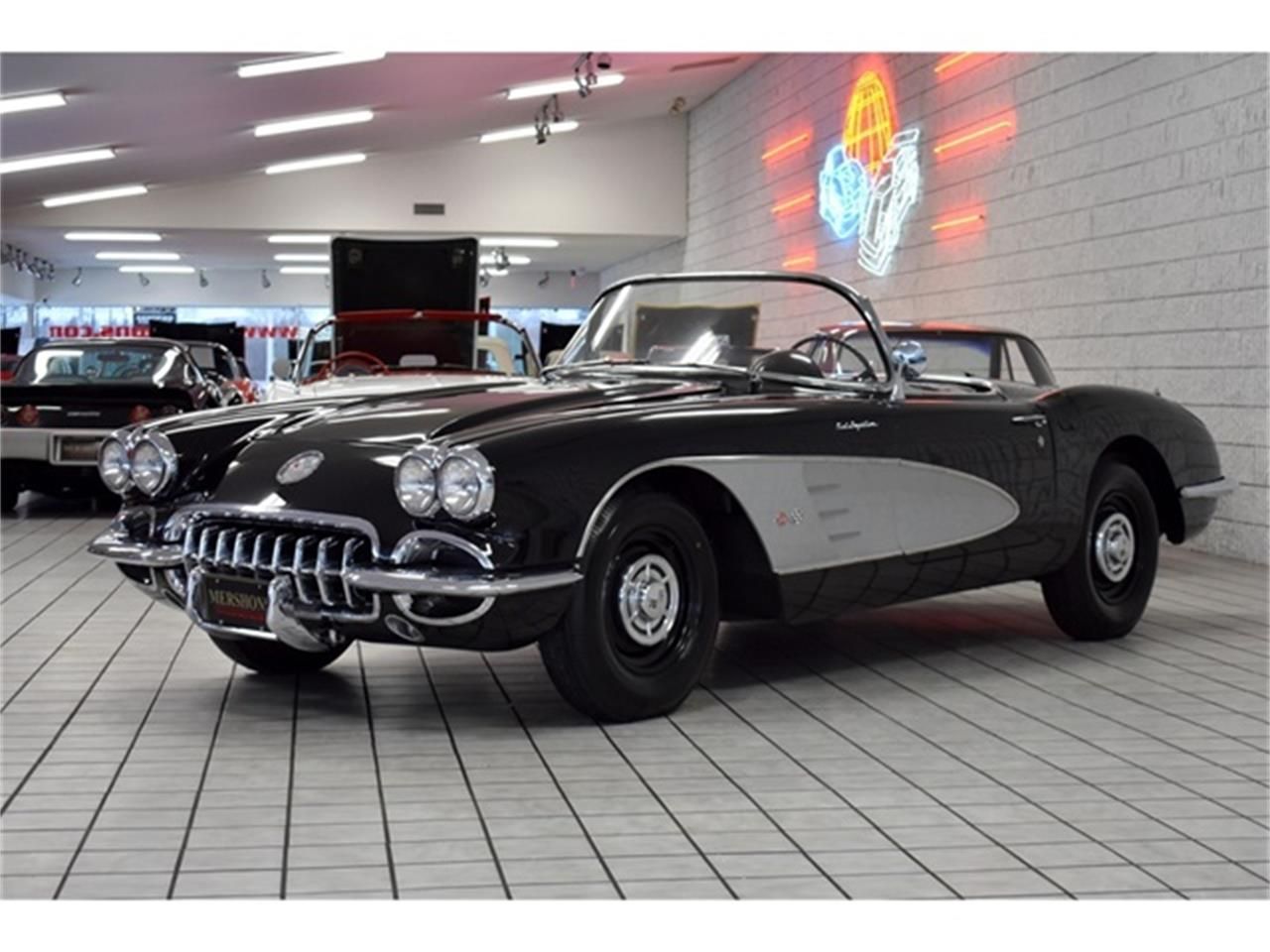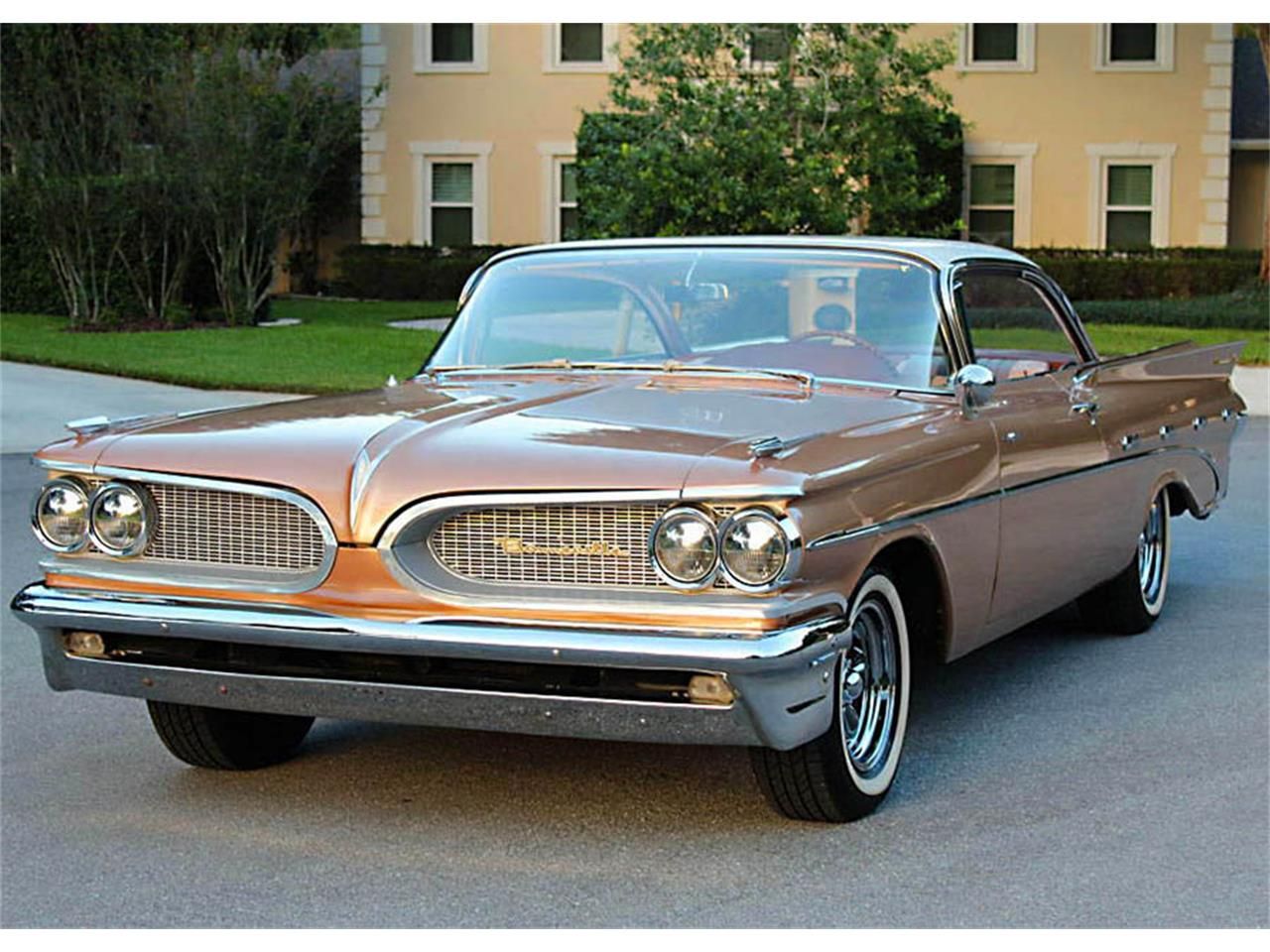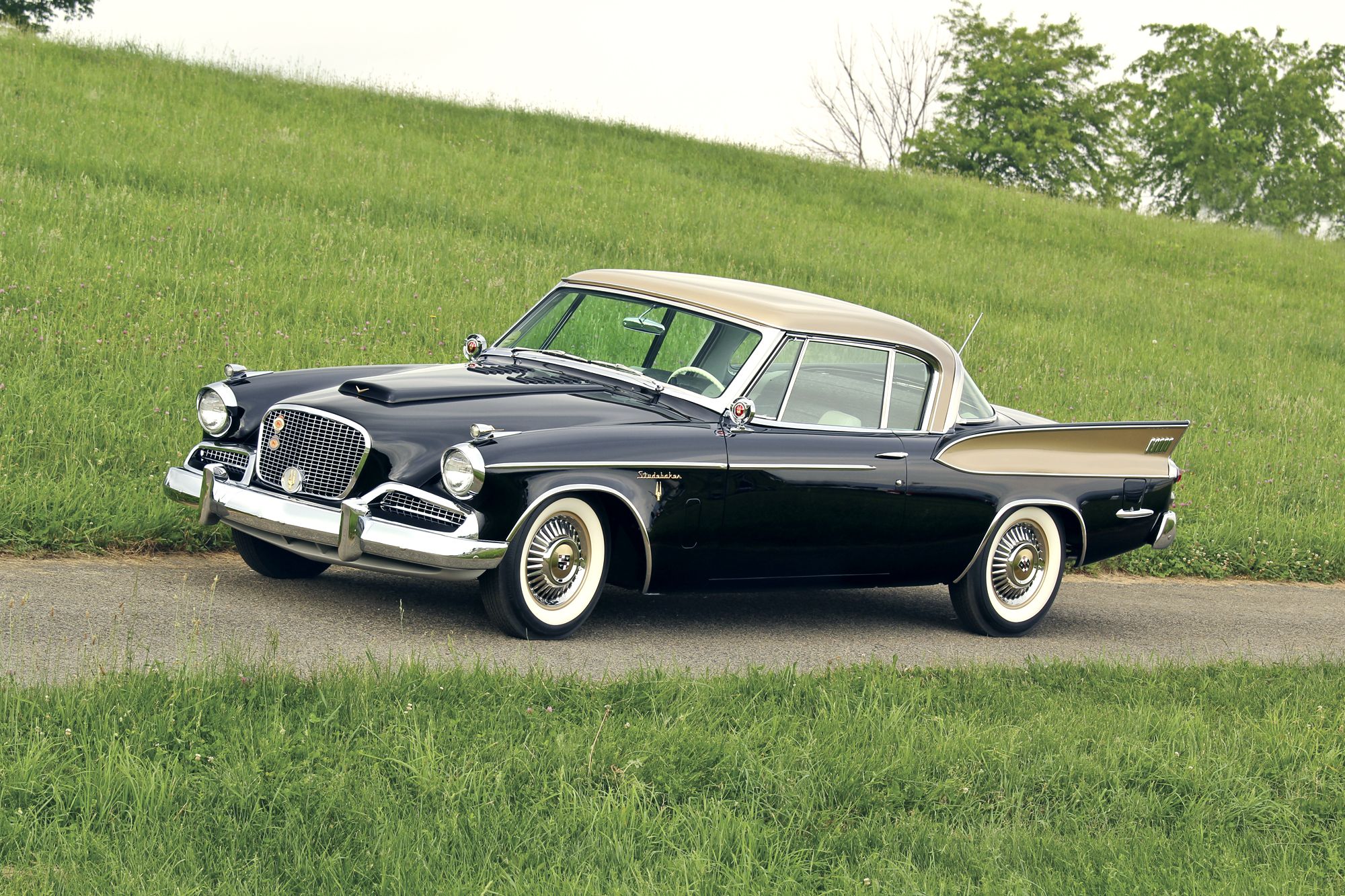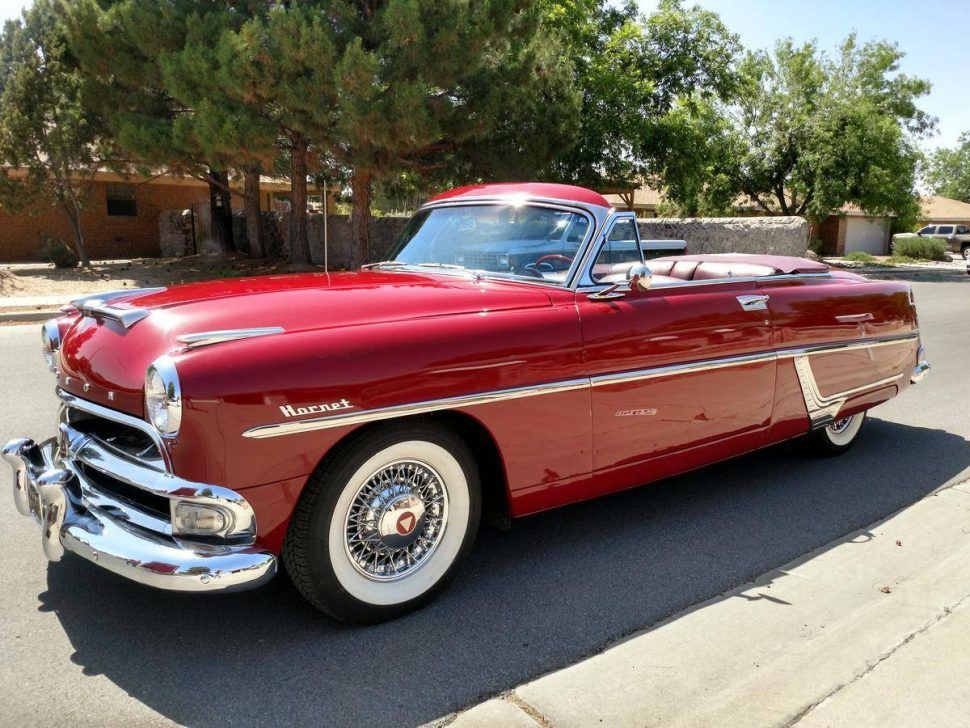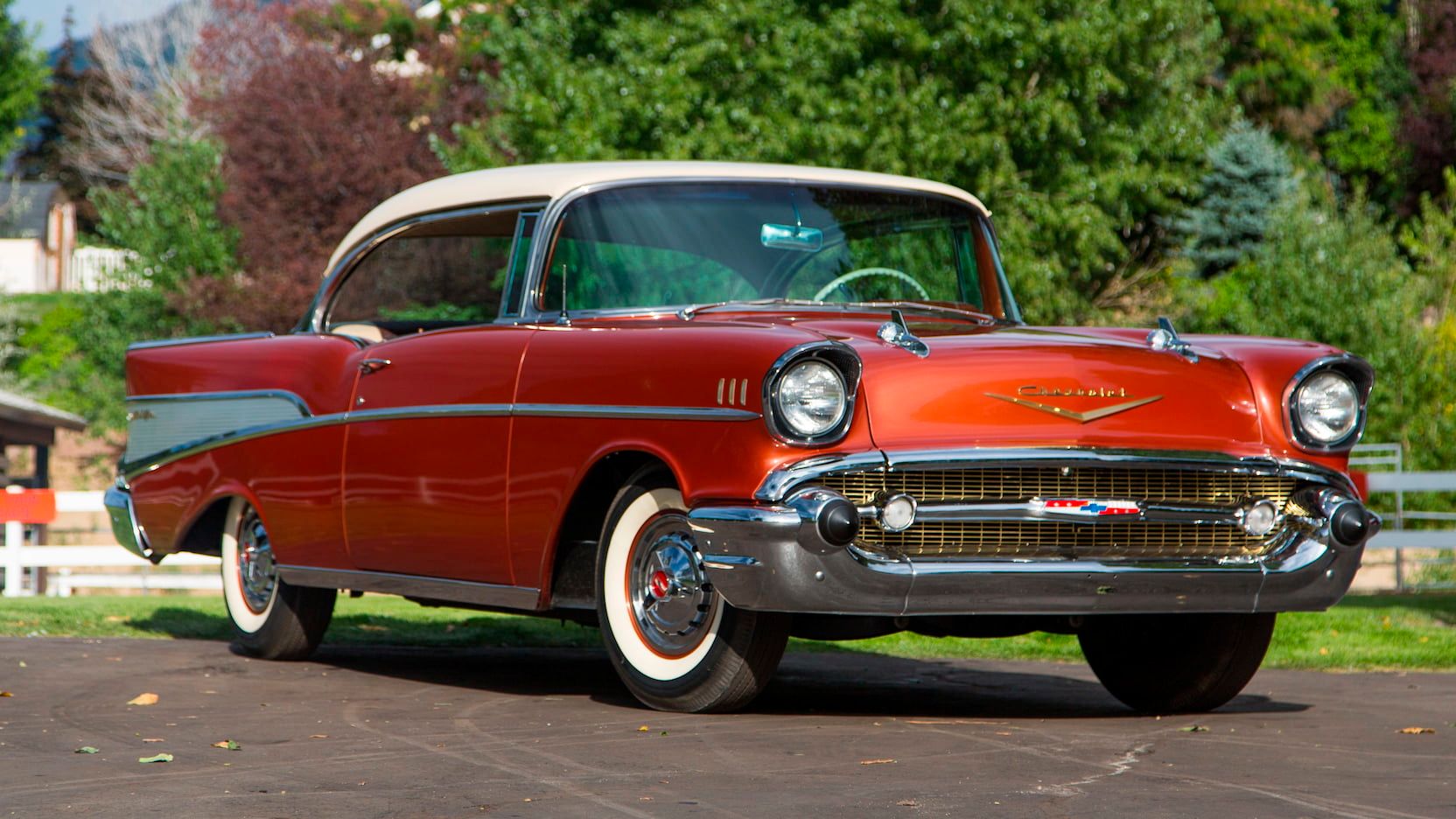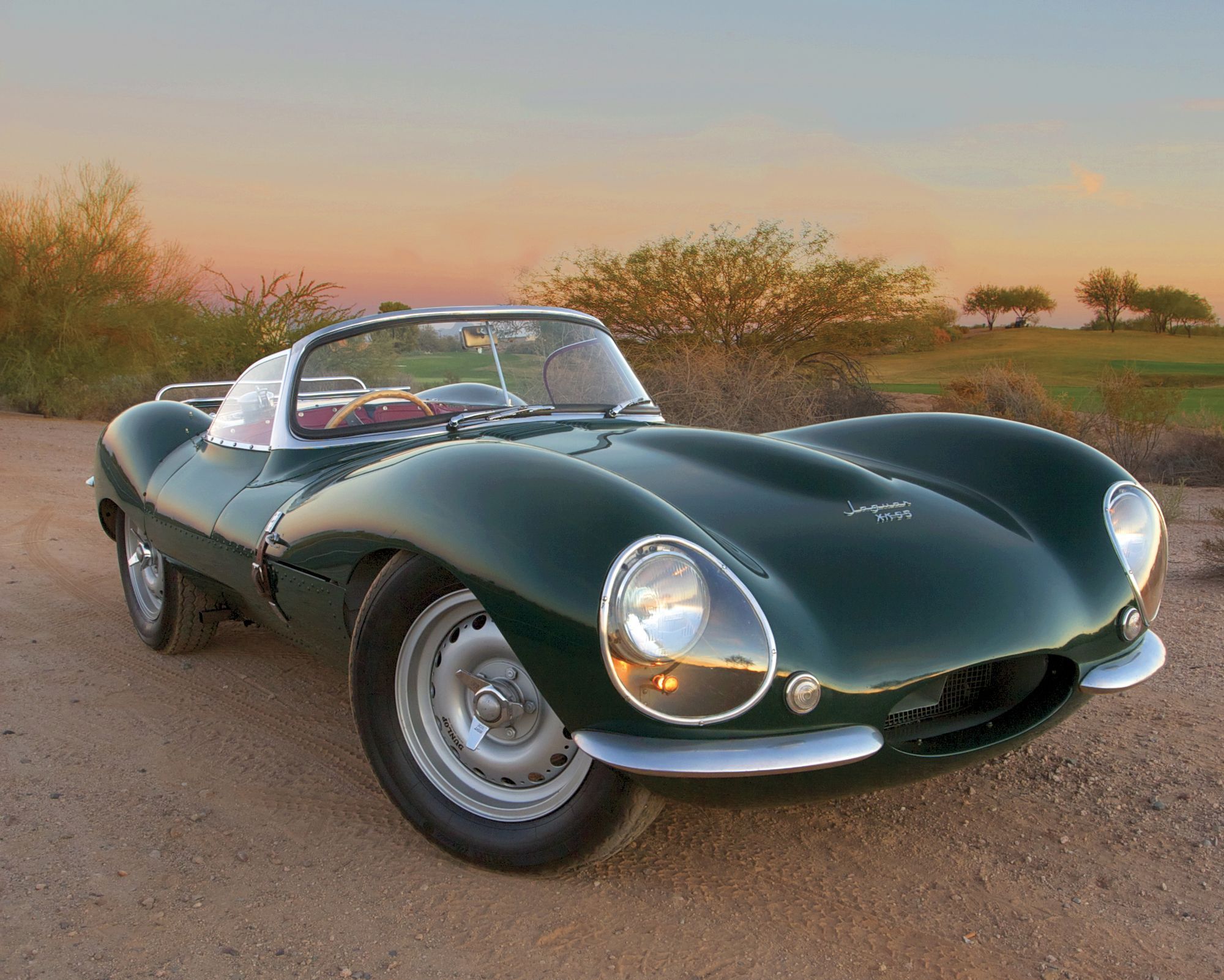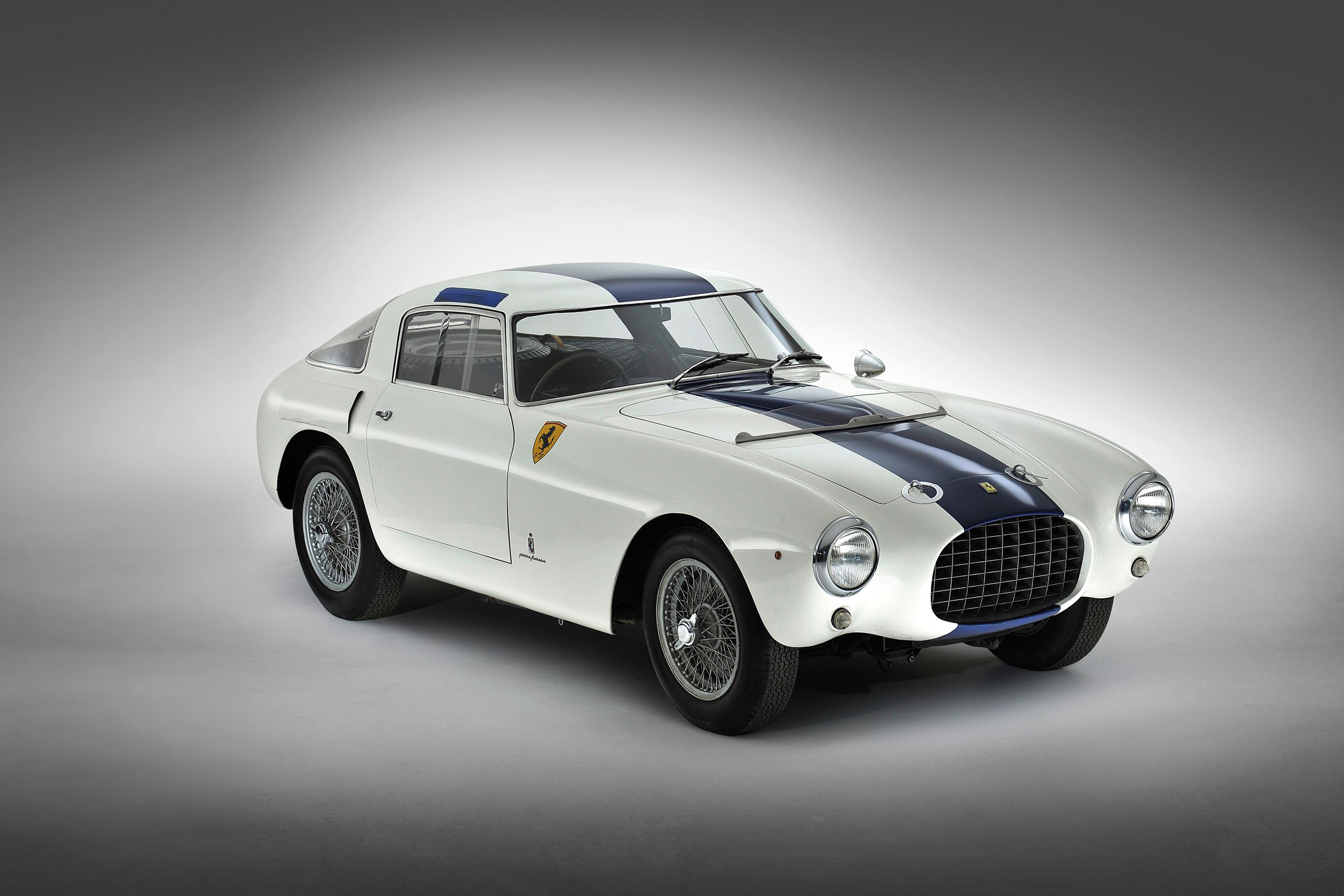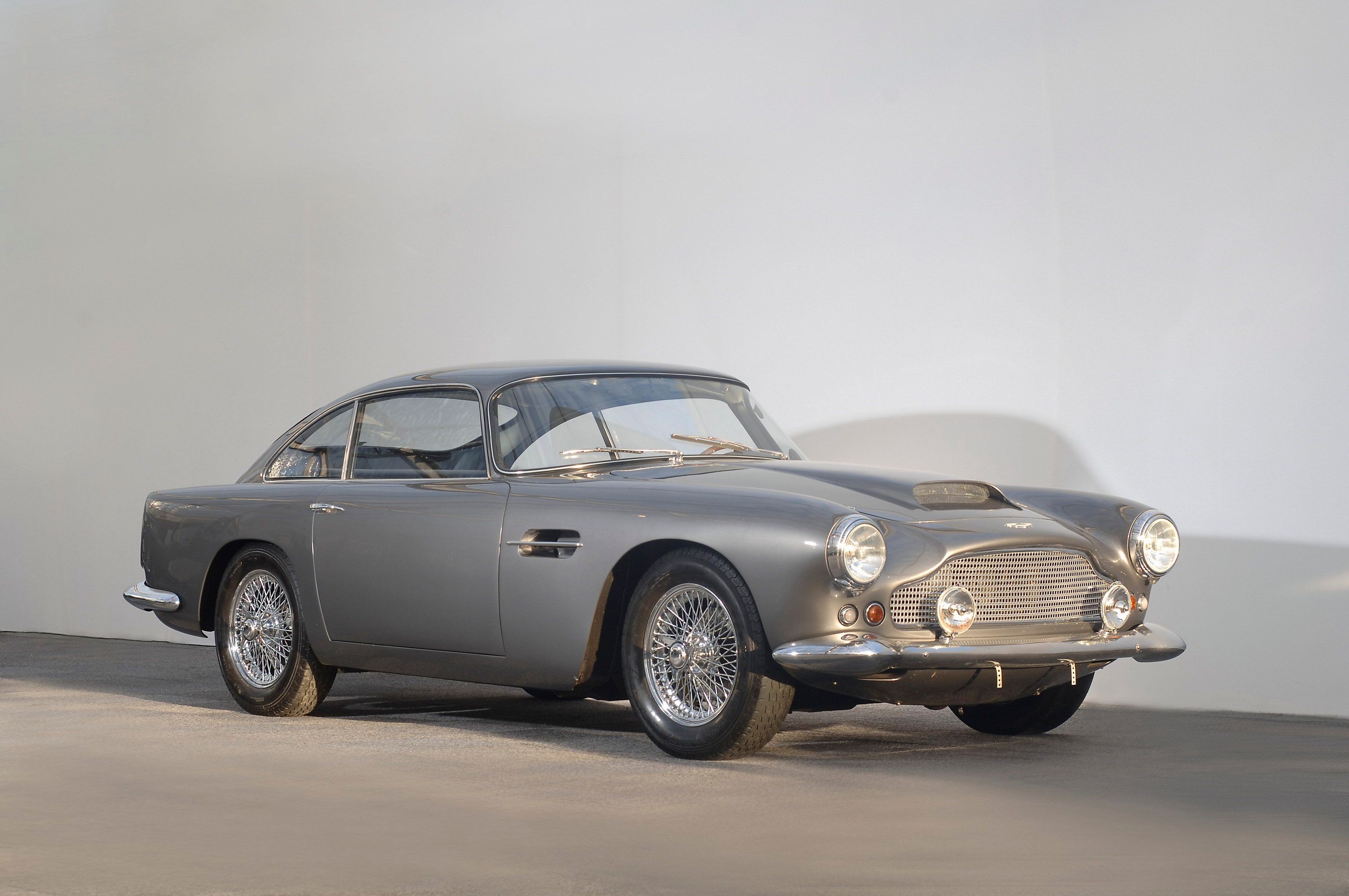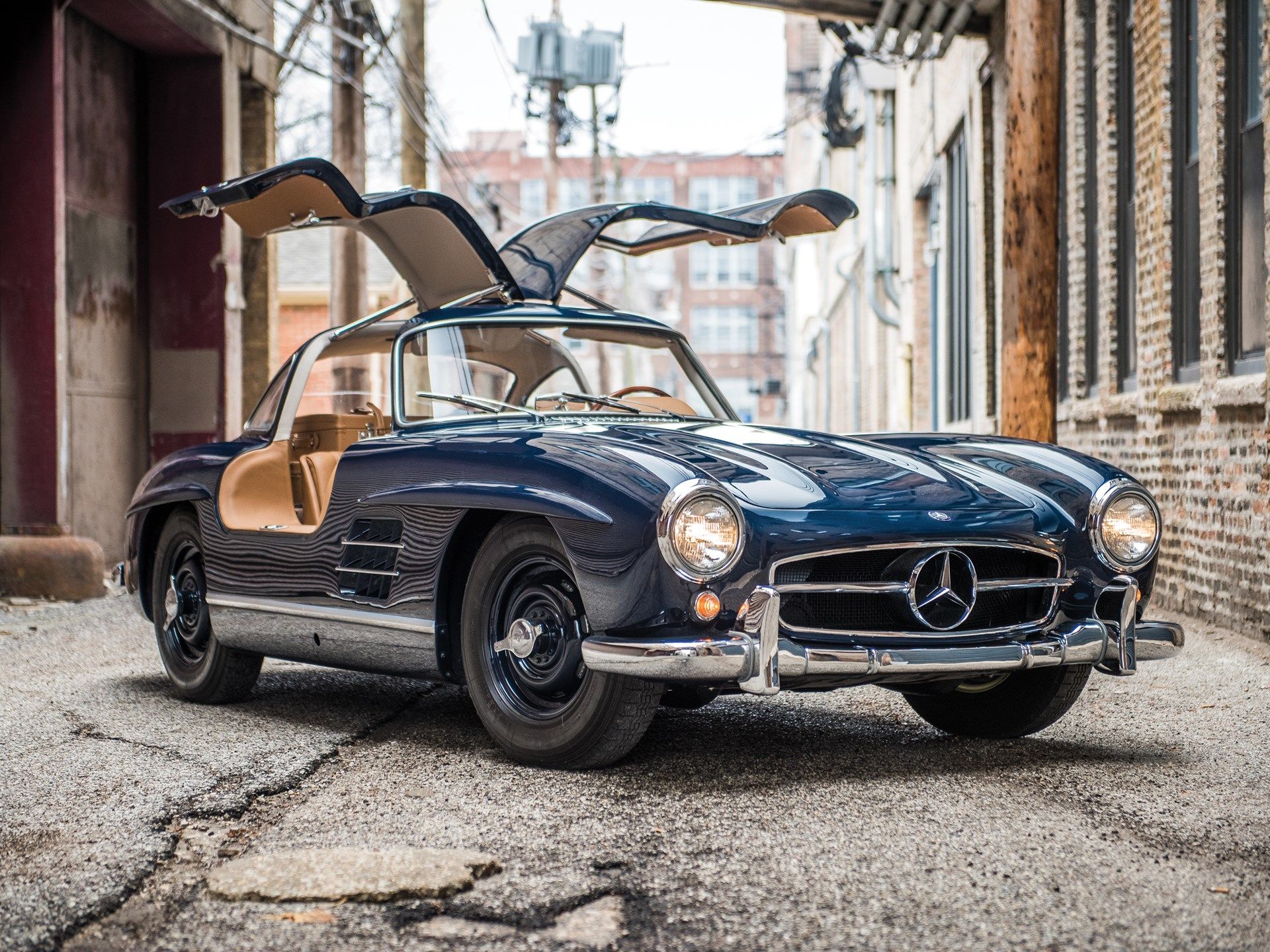The 1950s just seemed like a much simpler time; especially with regards to automobiles. There weren’t all of these high-tech gadgets in cars to keep people occupied and distracted on what they were in or where they were going. These weren’t heavy production vehicles, they were works of art. The cars of the 1950s had more expression. The grunt and rumble of the engine through a booth-like cushioned seat, surrounded by smooth, elongated body lines is an experience that every car enthusiast needs to experience.
Those cars that carried us from one era to the next were so captivating that they still capture people the same way that they did so long ago. This list is going to cover 10 of those cars, that we wish we could drive.
10 1953 Buick Skylark
The Buick Skylark was way ahead of its time. Not only did it look dreamy, but it featured key elements that made it a driving dream. This car sported one of the newer, bigger engines of its time: the 322 cubic inch engine.
Another facet of the skylark that made it such a dream, was the reputable twin-tubrined, dynaflow transmission that Buick had figured out. This car would shift like butter, to give a better understanding. With power brakes, power steering and a beautiful convertible top, it’s easy to see why it was a staple of the 1950s. Back then, this car would cost you, approximately $4,500.
9 1959 Chevy Corvette
The Corvette is a name that any car enthusiast knows very well. With its inception more than a decade before the mustang or camaro, this hotrod coupe was the only car in its class, with plenty of criticism both good and bad.
This particular model came with a new quad headlight look and more chrome than its predecessor. A bigger engine was put in this model, a small black 283 cubic inch which produced around 290 horsepower, paired with a 2 speed automatic, 3 speed manual or 4 speed optional, this car had plenty of options for any gear nut. With the 50s coming to a close, the design team knew they would have to produce a car that would leave a lasting impression. It’s safe to say if you owned this car (then or now) everyone would know who you were.
8 1959 Pontiac Bonneville
Pontiac had been in business for 50 years, by this point. A lot of manufacturers seemed very similar with the cars they were coming out with, and Pontiac had to separate themselves from the pack. When this second generation car came into its third year of production, it already had a full line of models to choose from and two iconic features: the wide-track tagline and split grille.
With being one of the longest cars for its time, it had impressive capabilities, being known as the best cornering full-sized car in production. The engine that powered this fender-flaring beast was a 389 cubic inch tempest that produced 310 horsepower. For this era, that’s a lot of car and a lot of power. It’s safe to say the Bonneville had no trouble cruising the streets.
7 1958 Studebaker Golden Hawk
In the 1950s, one of the most noticeable front-ends on a car was actually an independent manufacturer: Studebaker. Not long before the Golden Hawk’s inception, Studebaker bought-out a former partner named Packard. Essentially, this car was a Packard, just renamed and re-emblemed.
There were changes made to the new lineup within just a few short years of the new name. A new 289 cubic inch V8 with a supercharger, would replace the Packard engine, as well as smaller wheels to allow the car to ride lower. Some of the prominent features aside from the paint and accent finishes were the tail fins and pod lights above the headlights, as well as the fascia. The shape of the grille and emblem on the hood were sure-fire ways of distinguishing a Studebaker from the pack.
6 1954 Hudson Hornet Hollywood
When it comes to NASCAR and stock car racing in general, Hudson was the dominating manufacturer when it all started in the 50s. The “Fabulous Hudson Hornet,” as it was appropriately called, won the majority of the races in the first part of the decade with various racing legends, such as Herb Thomas and Tim Flock.
With all this fame and glory, it’s easy to see why this car was named Hollywood: it’s a star! This car sported a huge 308 cubic inch V6 and produced 160 horsepower. This car company may have been bought by AMC, but it’ll always be known for the car that won race fan’s hearts all over: “The Fabulous Hudson Hornet.”
5 1957 Chevy Bel Air Sport
Known as one of the most recognizable American cars of all time, this icon sure takes us back down memory lane. Thoughts of soda shops come to mind, along with late-night dates over lookout point, and especially hauling down a street given the opportunity. This second generation car had seen some nice improvements, from the wider chrome grille, the bigger engine known as the “Super Turbo Fire V8” 283 cubic inch engine that put out an estimated 285 horsepower if you got the dual carb system and the 2-speed power glide transmission.
It wasn’t until the third generation Bel Air, would the world see the first produced big block V8 in a production car, but this body style and all its cues are what make it known as the icon of the 50s.
4 1957 Jaguar XKSS
This car was known for being produced as a road version of its racing variant the, Jaguar D-type. The XKSS began production in 1957 in quite small numbers, but one of those cars became quite as famous as the actor and race car driver, Steve McQueen, that owned it. Steve certainly knew how to properly present a British sports car, and we give him respect for painting it British racing green.
The unique curves on this car seem almost endless, from the tail quarter panels to the headlights. This made for an excellent, aerodynamically-sound car. This roadster was equipped with a 3.4 liter inline 6 engine that produced 262 horsepower, paired with a 4-speed manual gearbox to ring out the engine and to keep this car pegged in the corners. Just like it ought to be.
3 1953 Ferrari 250 MM
This mystical machine debuted in the Geneva Motor Show in 1953. The MM doesn’t stand for mystical machine, however, it stands for Mille Miglia which was an open road, 1000 mile motorsports endurance race in Italy from 1927 to 1957. This car was powered by a 180 cubic inch V12, that produced 240 horsepower, and could be felt grunting through a 4-speed manual gearbox, which makes sense, because it was a racecar, through and through.
The v12 was replaced later in production year by a 4 cylinder, believe it or not, and had a price tag of $12,000. Regardless of the inflation price or even the drastic displacement change under the hood, this historical machine would proudly be driven down any road, anywhere.
2 1958 Aston Martin DB4
This Italian-designed car was known as a superlegerra, meaning a tube-framed car. Being designed in Milan, it can be deceiving to know that this car is actually a British car. This legendary machine sported a 3.7 liter inline 6 that produced 240 horsepower and was known at the first production car to reach 100 miles per hour in under 30 seconds.
This car did it 21 seconds, to be exact. Even though the engine was prone to overheating, it’s a minor flaw when given the opportunity to drive such a beautiful piece of history.
1 1954 Merecedes Benz Gull Wing 300 SL
This popular coupe, which was dubbed the sports car of the century in 1999, hardly needs an introduction. Being modeled after its predecessor, the W194, this car was basically injected with race heritage before its performance was truly even known. The name serves a purpose as well, it tells a story of the car. The 300 stands for 300 centiliter, which better translates to the 3,000 cubic centimeter engine displacement.
Converted to cubic inches, this inline 6 cylinder was 183 cubic inches and produced 215 horsepower. Being paired with a well-acquainted manual 4-speed gearbox, this was one of the fastest cars of the 50s. This can be inferred from the SL in the name, which stands for super light. Even though there are gull-wing modeled cars still today, what this car truly is with heritage and character from a different time could never be replicated; only experienced from driving the original winged-wonder.

